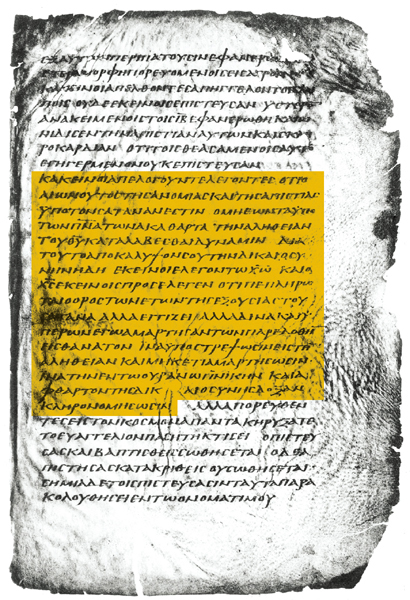Image Details

Photo courtesy of Freer Gallery of Art, Smithsonian Institute, Washington, DC/Gift of Charles Lang Freer, F1906.298(L) & F1906.274(R)
The highlighted passage in this page from the codex is an addition to Mark known only from this manuscript and from a passing reference made to it by Jerome in the fourth century (compare with photo of cover panel from Codex Washingtonianus). Called the Freer Logion, the passage immediately follows Mark 16:14, in which Jesus appears to the disciples in Jerusalem and upbraids them for not believing those who have seen him risen. According to the Freer Logion, the disciples claim it was not their fault; Satan had not allowed “the truth and power of God to prevail.” The Freer Logion is part of Form 4, the expanded long form of Mark’s gospel.
Charles Freer, a self-made railroad magnate, purchased the manuscript in Egypt in 1906. A collector of Asian antiquities and of Orientalist paintings (by American and English artists who adapted eastern styles), Freer was nervous but excited about the purchase of the biblical manuscripts. The normally taciturn Freer confessed to a business associate that the purchase carried him “completely off [his] feet.”
